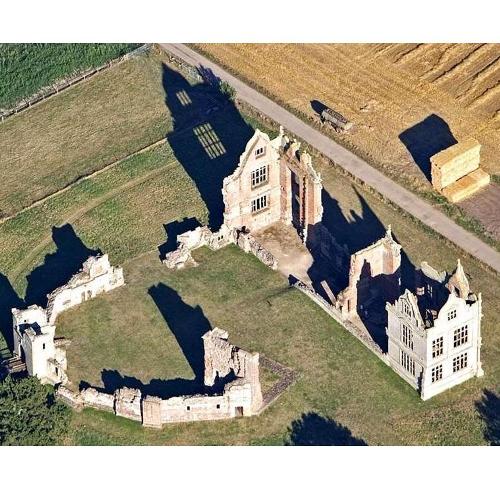Moreton Corbet Castle SY4 4DW
Free for everyone
Open: Seasonal - See website
About:
The impressive ruins of Moreton Corbet Castle are the result of over 800 years of building, combining elements of a medieval castle and a fashionable Elizabethan mansion. The original timber castle of about 1100 was replaced in stone about 1200. In the 1560s Sir Andrew Corbet began to remodel the castle, and from 1579 his son Robert began its transformation into a spectacular mansion with an elaborate three-storey south range and a formal garden. After 1680, however, the Corbets lost interest in the castle as a residence and it slowly fell into decay.
Today the Elizabethan range endures as its most impressive building, while parts of the 13th-century castle, including a fine gatehouse, also survive.
The Torets, a family of Saxon descent, established the first castle in about 1100. The first buildings were of timber. They were encircled by earth and timber defences, including the ditch – originally a deep obstacle – visible alongside the west wall.
From about 1200, however, this castle was rebuilt in stone, with a wall enclosing a bailey or courtyard, including the now semi-ruinous gatehouse and great tower. This stone castle was in the same tradition as other fortified residences of the Welsh Marches.
In February 1216 Bartholomew Toret held the castle as part of the rebellion against King John (reigned 1199–1216) in the First Barons’ War (1215–17), which followed Magna Carta. It was besieged and captured for the king by William Marshal, but later restored to the Torets.
The castle passed to Richard Corbet by his marriage to Bartholomew’s daughter, Joanna. Corbet’s family name was to become attached to the village, replacing the earlier name of Moreton Toret.
Dog Friendly:
Dogs on leads are welcome.
Entry Charge:
Variable prices (see website)
Parking:
There is limited free car parking available in the layby next to the castle.
Facilities:
Shops and a pub can be found in nearby Shawbury. There are no toilet facilities at the castle.
Notes:
Wheelchair access is possible to most of the site, but there are some short flights of stairs within the ruins.
There is a hidden drop within the ruins, next to the Elizabethan Kitchen.
Contact:
Website: www.english-heritage.org.uk
Tel: 0370 3331181

